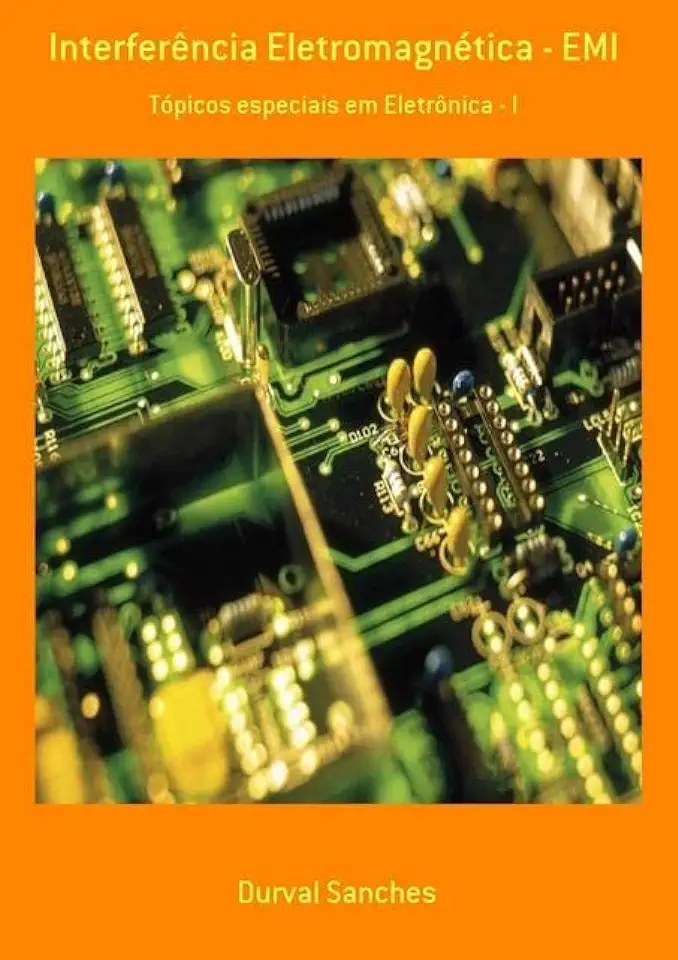
Electromagnetic Interference - Durval Sanches
Electromagnetic Interference: A Comprehensive Guide to Understanding and Mitigating EMI
Introduction
In today's increasingly interconnected world, electromagnetic interference (EMI) has become a significant challenge for engineers, designers, and manufacturers. From simple household appliances to complex electronic systems, EMI can disrupt the proper functioning of devices, leading to malfunctions, errors, and even safety hazards.
Understanding EMI
Electromagnetic interference refers to the disturbance caused by electromagnetic energy to the operation of electrical or electronic devices. It can occur when electromagnetic fields or waves emitted by one source interfere with the electrical circuits or signals of another device. EMI can be generated by various sources, including electrical motors, power lines, wireless devices, and even natural phenomena like lightning.
Types of EMI
There are two primary types of EMI: conducted EMI and radiated EMI. Conducted EMI occurs when electromagnetic interference is transmitted through electrical conductors, such as wires or cables. Radiated EMI, on the other hand, occurs when electromagnetic interference is transmitted through the air in the form of electromagnetic waves.
Effects of EMI
EMI can have a wide range of effects on electronic devices, depending on the severity and nature of the interference. Some common effects include:
- Malfunctions: EMI can cause devices to malfunction or behave erratically, leading to incorrect results or even complete system failures.
- Errors: EMI can introduce errors into data transmission or processing, resulting in corrupted data or incorrect calculations.
- Safety hazards: In severe cases, EMI can pose safety hazards by disrupting the proper functioning of critical systems, such as medical devices or industrial control systems.
Mitigating EMI
Mitigating EMI is crucial to ensure the proper functioning and reliability of electronic devices. Several techniques can be employed to reduce or eliminate EMI, including:
- Shielding: Enclosing sensitive electronic components or devices in conductive enclosures can block or attenuate electromagnetic fields.
- Filtering: Using filters to block or suppress unwanted frequencies can prevent EMI from entering or leaving a device.
- Grounding: Proper grounding techniques can help dissipate EMI and prevent it from affecting sensitive circuits.
- Circuit design: Careful circuit design and layout can minimize the susceptibility of devices to EMI.
Conclusion
Electromagnetic interference is a pervasive challenge in today's electronic landscape. Understanding the nature of EMI, its effects, and the techniques to mitigate it is essential for engineers, designers, and manufacturers to ensure the reliability and performance of their electronic systems.
Why You Should Read This Book
"Electromagnetic Interference" by Durval Sanches is a comprehensive and authoritative guide to understanding and mitigating EMI. Written by an expert in the field, this book provides a thorough exploration of EMI, covering everything from its fundamental principles to practical mitigation techniques.
With over 1500 pages of in-depth content, this book is an invaluable resource for engineers, designers, and anyone involved in the development and testing of electronic devices. It offers a wealth of practical insights, real-world examples, and case studies to help readers effectively address EMI challenges.
Whether you're a seasoned professional or just starting in the field, "Electromagnetic Interference" is a must-have resource that will empower you to design and build robust and reliable electronic systems.
Order Your Copy Today!
Don't let EMI compromise the performance and safety of your electronic devices. Order your copy of "Electromagnetic Interference" today and take control of EMI challenges.
Enjoyed the summary? Discover all the details and take your reading to the next level — [click here to view the book on Amazon!]